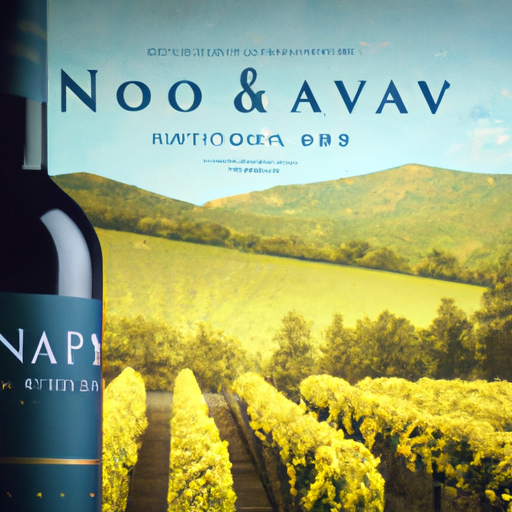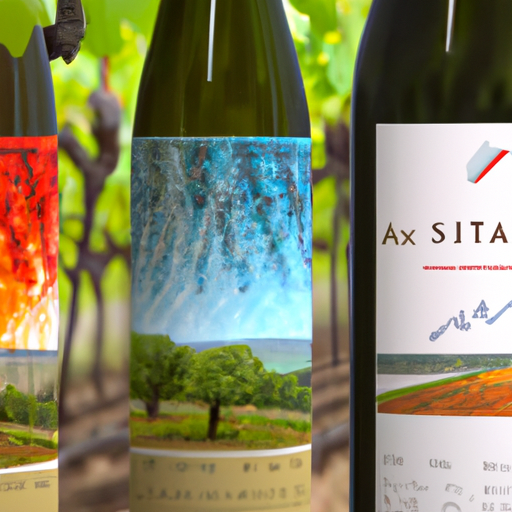
The History and Evolution of Napa Valley’s Wine Industry
Napa Valley, located in Northern California, is renowned for its world-class wines and picturesque vineyards. The region’s wine industry has a rich history that dates back to the 19th century, and it has evolved significantly over the years. In this article, we will explore the history and evolution of Napa Valley’s wine industry, highlighting key milestones and developments that have shaped the region’s reputation as a premier wine destination.
The origins of Napa Valley’s wine industry can be traced back to the mid-1800s when European immigrants, particularly those from Italy and Germany, began planting vineyards and producing wine. These early pioneers recognized the region’s favorable climate and soil conditions, which were ideal for grape cultivation. As a result, Napa Valley quickly gained recognition for its high-quality wines.
However, it wasn’t until the 1960s that Napa Valley truly emerged as a world-class wine region. This period marked a turning point for the industry, as a group of visionary winemakers sought to elevate the quality and reputation of Napa Valley wines. These pioneers, known as the “Napa Valley Vintners,” implemented innovative winemaking techniques and focused on producing wines that showcased the unique characteristics of the region’s terroir.
One of the most significant milestones in Napa Valley’s wine industry was the 1976 Judgment of Paris. This blind tasting event, organized by British wine merchant Steven Spurrier, pitted California wines against their French counterparts. To everyone’s surprise, two Napa Valley wines, a Chardonnay and a Cabernet Sauvignon, took top honors in their respective categories. This victory put Napa Valley on the global wine map and solidified its reputation as a producer of world-class wines.
In the following decades, Napa Valley continued to flourish, attracting both established winemakers and aspiring entrepreneurs. The region’s success can be attributed to several factors, including its commitment to sustainable and organic farming practices, the establishment of American Viticultural Areas (AVAs) to recognize distinct winegrowing regions within Napa Valley, and the proliferation of boutique wineries that focus on small-batch, artisanal production.
Today, Napa Valley is home to over 400 wineries, ranging from small family-owned operations to large-scale commercial enterprises. The region is known for its diverse range of grape varieties, with Cabernet Sauvignon being the most widely planted. Other popular varietals include Chardonnay, Merlot, Pinot Noir, and Sauvignon Blanc. Napa Valley’s wines are celebrated for their exceptional quality, complexity, and ability to age gracefully.
In recent years, Napa Valley’s wine industry has faced various challenges, including climate change, wildfires, and the COVID-19 pandemic. These events have forced winemakers to adapt and innovate, implementing sustainable practices to mitigate the effects of climate change, investing in fire prevention measures, and leveraging technology to enhance the wine tasting experience for virtual visitors.
Despite these challenges, Napa Valley’s wine industry remains resilient and continues to thrive. The region’s commitment to excellence, innovation, and sustainability ensures that it will remain a global leader in the production of premium wines for years to come.
In conclusion, the history and evolution of Napa Valley’s wine industry is a testament to the region’s dedication to producing exceptional wines. From its humble beginnings in the 19th century to its current status as a world-class wine destination, Napa Valley has come a long way. The region’s commitment to quality, innovation, and sustainability has solidified its reputation as a premier wine region, attracting wine enthusiasts from around the world. As Napa Valley continues to evolve and face new challenges, one thing is certain – its wines will continue to captivate and delight wine lovers for generations to come.
Exploring the Sustainable Practices in Napa Valley’s Winemaking

Napa Valley is renowned for its world-class wines, and behind the scenes, winemakers are implementing sustainable practices to ensure the longevity of their vineyards and the quality of their wines. In this article, we will explore the sustainable practices in Napa Valley’s winemaking, as documented in the Napa Wine Project Summary for 2021.
One of the key sustainable practices in Napa Valley’s winemaking is the use of organic and biodynamic farming methods. Organic farming eliminates the use of synthetic pesticides and fertilizers, relying instead on natural alternatives. Biodynamic farming takes this a step further by incorporating holistic practices that consider the vineyard as a self-sustaining ecosystem. These methods not only protect the environment but also result in healthier soils and vines, ultimately producing higher quality grapes.
Water conservation is another crucial aspect of sustainable winemaking in Napa Valley. The region experiences dry summers, making water a precious resource. Winemakers have implemented various strategies to reduce water usage, such as using drip irrigation systems that deliver water directly to the roots of the vines, minimizing evaporation. Additionally, many wineries have invested in water recycling systems, allowing them to reuse water for irrigation or other non-potable purposes.
Energy efficiency is also a priority for Napa Valley winemakers. Many wineries have adopted solar power systems, harnessing the abundant California sunshine to generate clean energy. This not only reduces their carbon footprint but also helps to offset the energy-intensive processes involved in winemaking, such as refrigeration and barrel aging. Some wineries have even gone a step further by implementing energy-efficient lighting and insulation, further reducing their energy consumption.
Waste management is another area where Napa Valley winemakers are making strides towards sustainability. The production of wine generates various byproducts, such as grape pomace and grape seeds. Instead of disposing of these waste materials, wineries are finding innovative ways to repurpose them. For example, grape pomace can be used as compost or animal feed, while grape seeds can be processed into grape seed oil or used in skincare products. By finding alternative uses for these byproducts, wineries are minimizing waste and creating additional revenue streams.
Biodiversity conservation is also a focus in Napa Valley’s sustainable winemaking practices. Many wineries have set aside portions of their land as wildlife habitats, planting native vegetation and creating corridors for wildlife to thrive. This not only enhances the ecological balance but also contributes to the overall health of the vineyard ecosystem. Additionally, some wineries have implemented integrated pest management strategies, using natural predators and beneficial insects to control pests, reducing the need for chemical pesticides.
In conclusion, Napa Valley’s winemakers are committed to sustainable practices that protect the environment, enhance the quality of their wines, and ensure the long-term viability of their vineyards. From organic and biodynamic farming methods to water conservation, energy efficiency, waste management, and biodiversity conservation, these practices are transforming the way wine is produced in the region. By embracing sustainability, Napa Valley’s winemakers are not only preserving the natural beauty of the region but also setting an example for the global wine industry.
Top Napa Valley Wineries to Visit in 2021
Napa Valley is renowned for its world-class wineries and picturesque vineyards, making it a must-visit destination for wine enthusiasts. With so many wineries to choose from, it can be overwhelming to decide which ones to visit. To help you plan your trip, we have compiled a list of the top Napa Valley wineries to visit in 2021.
One of the most iconic wineries in Napa Valley is Beringer Vineyards. Established in 1876, Beringer is not only one of the oldest wineries in the region but also one of the most respected. Known for its exceptional Cabernet Sauvignon and Chardonnay, Beringer offers a variety of tasting experiences, including guided tours of its historic caves and vineyards. The winery’s beautiful grounds and stunning architecture make it a must-see destination for wine lovers.
Another must-visit winery in Napa Valley is Domaine Carneros. Specializing in sparkling wines, Domaine Carneros is a joint venture between Champagne Taittinger and the Kopf family. The winery’s elegant château overlooks the vineyards, providing a breathtaking backdrop for wine tasting. Visitors can enjoy a range of sparkling wines, including their renowned Brut and Rosé. The winery also offers guided tours and tastings, allowing visitors to learn about the art of sparkling wine production.
For those seeking a more intimate and boutique experience, a visit to Stag’s Leap Wine Cellars is a must. This historic winery gained international recognition in 1976 when its Cabernet Sauvignon won the famous Judgment of Paris blind tasting. Since then, Stag’s Leap has continued to produce exceptional wines, particularly their signature Cask 23 Cabernet Sauvignon. The winery offers a range of tasting experiences, including private tours and tastings in their stunning wine caves. A visit to Stag’s Leap is a true treat for wine connoisseurs.
If you’re looking for a winery that combines exceptional wines with breathtaking views, look no further than Opus One. Founded as a joint venture between Robert Mondavi and Baron Philippe de Rothschild, Opus One is known for its Bordeaux-style blends. The winery’s state-of-the-art facility offers panoramic views of the surrounding vineyards, creating a serene and picturesque setting for wine tasting. Visitors can enjoy a range of tastings, including their flagship Opus One blend, while learning about the winery’s commitment to quality and sustainability.
Last but not least, a visit to Cakebread Cellars is a must for those seeking a family-owned and operated winery experience. Founded in 1973, Cakebread Cellars is known for its exceptional Chardonnay and Cabernet Sauvignon. The winery offers a range of tasting experiences, including guided tours of their vineyards and production facilities. Visitors can also enjoy food and wine pairings, showcasing the winery’s commitment to culinary excellence.
In conclusion, Napa Valley is home to some of the world’s finest wineries, each offering a unique and unforgettable experience. Whether you’re a fan of bold reds, crisp whites, or sparkling wines, there is a winery in Napa Valley that will cater to your taste. From historic estates to boutique vineyards, the top Napa Valley wineries to visit in 2021 offer something for every wine lover. So, plan your trip, indulge in exquisite wines, and immerse yourself in the beauty of Napa Valley’s wine country.






